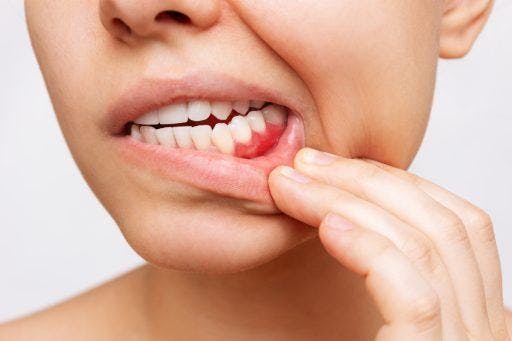The course of growing teeth can be uncomfortable. But baby teething pains are nothing compared to when your wisdom teeth finally erupt on each side of your upper and lower jaws. For some lucky ones, third molars grow without a problem. But for others, they cause excruciating pain and complications that warrant a closer look (for example, surgical procedures).
Read on for everything you need to know about wisdom teeth, from when you should leave these controversial molars alone to whether you should consult a dentist.
What are wisdom teeth?
Wisdom teeth are the last four molars at the back of your mouth. The first known people to don them dates back to 13,000 BC when an extra set of molars was needed to chew the tough, unprocessed foods back in the day. Now that food is softer, they’ve become an accessory.
Wisdom teeth typically emerge between your late teens and mid-20s. According to the Dental Research Journal, 5% to 37% of the global population never get them, while most who do get them removed. If you’re one of the unlucky people who fall under the latter statistic, here’s what you need to know in the event of a wisdom tooth extraction.
6 signs your wisdom teeth need to go
How do you know when to remove wisdom teeth? Here are the most common signs to look out for before going to your dentist for a wisdom tooth extraction.
1. Extreme pain
Oral pain that doesn’t subside after brushing, flossing, or taking painkillers is a sign to visit your dentist. Well, ideally, you should go to the dentist first thing.
Finding the cause of your discomfort is essential for its management. So, expect your dental practitioner to conduct multiple checks and request X-rays to pin down the cause of the persistent ache. If they conclude that your third molars are the main culprit, they’ll likely proceed with wisdom tooth removal.
2. Swollen gums

Growing wisdom teeth can irritate your gums akin to teething infants and toddlers. Wisdom teeth that break through incorrectly can cause the gums to feel tight and hot. They’ll also look reddish and swollen.
3. Persistent cavities
Crowded or angled wisdom teeth can create hard-to-reach areas that are prone to tartar buildup and cavities. If you experience tooth decay in these parts, it may be a sign your molars are causing problems. Removing your wisdom teeth can reduce the areas where bacteria can thrive, making it less likely for cavities to form.
4. Teeth crowding
Larger wisdom teeth can cause problems as most mouths don’t have sufficient space to accommodate them. If left to grow, they can cause other teeth to shift and become crowded, leading to discomfort and disrupting teeth alignment.
After the wisdom tooth extraction, you can turn to orthodontic devices like ClearCorrect to straighten your pearly whites. This invisible aligner uses a high trimline and a tri-layer ClearQuartz material to push teeth back in place subtly and strategically. ClearCorrect-certified orthodontists also use ClearPilot, an intuitive digital treatment platform, to help you visualise your alignment’s progress.
Find out if you’re a candidate for ClearCorrect with this smile assessment.
5. Jaw issues
Disrupted jaw movements can interfere with chewing and digestion. Some attribute this to temporomandibular joint disorder, but another common cause is wisdom teeth. A Community Dentistry and Oral Epidemiology study reveals that Individuals with impacted third molars in the upper jaw have a higher chance of chronic orofacial pain.
6. Sinus congestion

Wisdom teeth that sprout roots into the upper jaw can cause pressure on the sinuses. Eventually, they lead to discomfort, including sinus pain, congestion, and headaches. Your third molars can also cause an infection in the sinus cavities, which results in a fever, bad breath, and nasal discharge.
When to get wisdom teeth out
Are you experiencing any or all these symptoms? Schedule an appointment with your dentist as soon as possible so they can assess your condition. A dental professional should be able to answer questions like, “Do you have to get your wisdom teeth out?” and advise you on what to do next.
What happens if you wait too long to get wisdom teeth out?
According to the American Dental Association, “A wisdom tooth that is impacted can form a cyst on or near the impacted tooth. This could damage the roots of nearby teeth or destroy the bone that supports your teeth.” If you go too long without consultation or treatment, you risk damaging your other teeth.
Dos and don’ts after a wisdom tooth extraction
While wisdom tooth extractions are generally straightforward, proper aftercare is essential. A Swiss Dental Journal study found that 8.4% of people who have undergone molar removal experienced some complications, including the following:
- Bleeding after surgery
- Infection
- Abscesses
- Dehiscence (reopening of wounds)
- Temporary nerve damage
- Dry socket, a condition that occurs when a clot does not form over the extraction area.
To avoid these issues, brush up on the dos and don’ts after the procedure.
What to do after molar extraction:
- Keep your head elevated to reduce any swelling.
- Ice your cheek for the first 24 to 48 hours to manage the pain.
- Stick to a soft food or liquid diet. Transition to hard foods slowly as your mouth starts to heal.
- Practice jaw exercises by gently opening and closing your mouth.
- Drink lots of fluids.
- Follow your prescription medication schedule. Skipping a dose can interfere with the healing process.
- Brush your teeth from the second day after surgery but avoid the extraction site.
- Call your dental provider immediately if you develop recurring or extreme pain or swelling.
Things to avoid after wisdom teeth removal:
- Don’t use a straw when drinking. Avoid sucking, spitting, or smoking. These movements can dislodge the protective blood clot that forms over the extraction site. If the clot becomes detached, it can lead to more bleeding and pain.
- Skip sharp or hard food for at least a week. Some examples are pretzels, potato chips, crackers, and popcorn.
- Don’t use ice packs for more than 48 hours after your extraction. Instead, switch to a warm compress. Alternatively, gently swishing with hot water can alleviate the pain and promote healing.
- Refrain from rinsing your mouth too vigorously.
How long will it take to recover after a wisdom tooth extraction?
Recovery after a wisdom tooth extraction largely depends on how well you follow your dentist’s recommendations about aftercare.
According to the Institute of Quality And Efficiency in Health Care, swelling can last a few hours or a couple of days. Your dentist may prescribe a painkiller to manage post-surgery pain, but you might want to take a break in the immediate aftermath of the operation. However, you should be back on your feet in about three to five days and completely healed in a week or two.
Many adults hesitate to have their wisdom teeth removed out of fear of how it may alter their smile. But enduring the pain, sensitivity, and irritation from these molars can impact daily life. Don’t wait for these symptoms to become unbearable before considering a wisdom tooth extraction. If you’re experiencing any of the signs mentioned above, immediately consult your dental provider for treatment options.
References:
American Dental Association. (n.d.). Wisdom teeth. MouthHealthy.com.
Mksoud, M., Ittermann, T., Daboul, A., Schneider, P., Bernhardt, O., Koppe, T., Bülow, R., Metelmann, H., Völzke, H., & Kindler, S. (2020). Are third molars associated with orofacial pain? Findings from the SHIP study. Community Dentistry and Oral Epidemiology, 48(5), 364–370.
The most common complications after wisdom-tooth removal: part 1: a retrospective study of 1,199 cases in the mandible. (2014b). PubMed.



